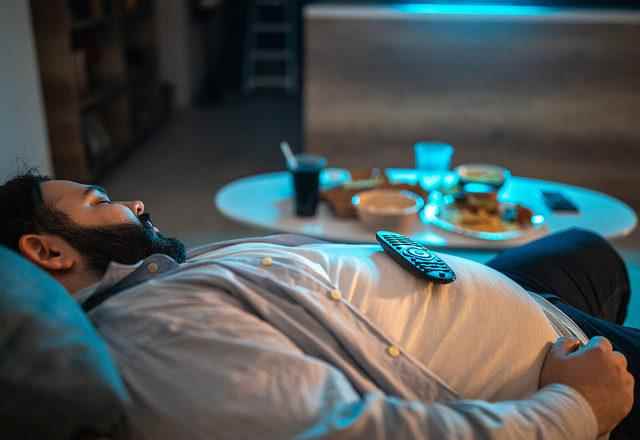The cessation of breathing during sleep is called sleep apnea. Sleep apnea is one of the most common sleep problems. Sleep apnea causes serious health problems and being sluggish and tired throughout the day. Dr. Cem Ortaçbayram pointed out that the very common sleep apnea disease, which can lead to death if not treated, recommended that sleep apnea be investigated in people who “wake up tired in the morning and had a headache, distracted and snoring”.
PROGRESSING SLIGHTLY
Dr. Cem Ortaçbayram, referring to the fact that there are about 100 diseases that cause sleep disorders in adults, said that the most common and most important of these is sleep apnea because of its insidious progression and can lead to very serious diseases and even death. Stating that the cessation of breathing for 10 seconds or longer during sleep is called “sleep apnea”, Dr. Ortaçbayram said, “The slowing down of breathing during sleep is called hypopnea, and its interruption for longer than 10 seconds is called ‘sleep apnea’. If the number of breathing interruptions during sleep is above 5 per hour, sleep apnea syndrome is in question.
CAN CAUSE HYPERTENSION AND HEART RHYTHM DISORDERS

Dr. Ortaçbayram pointed out that the quality of life of the patient with sleep apnea deteriorated, “He can sleep anytime, anywhere, even at the wheel. High-intensity snoring disturbs the environment. The sound is so loud that sometimes he even wakes up from the sound of snoring. He goes to work tired, has difficulty concentrating. The pleasure of working disappears. He returns home very tired, begins to fall asleep in front of the television. His communication with his family and surroundings is impaired,” he said. Untreated sleep apnea, the person; He said that it puts him in the high risk group in hypertension, infarction and heart rhythm disorders, and that it may even cause a traffic accident.
ATTENTION TO PEOPLE WHO EXPERIENCES SNORING AND CONTINUOUS SLEEPING

Talking about the many symptoms of sleep apnea, Dr. Ortaçbayram listed these symptoms as follows: “Snoring, shortness of breath during sleep, fatigue and headache in the morning, desire to sleep during the day, attention disorder, heart problems, hypertension, stomach and intestinal reflux and sexual reluctance.” Dr. Ortaçbayram added that sleep apnea syndrome should also be investigated in people who think they are getting enough sleep but wake up tired, who are tired during the day and who have sleepiness.
DEFINITELY DIAGNOSED BY SLEEP TEST

Suggesting that the person who observes these symptoms should consult a physician, Dr. Ortaçbayram said, “3 questions that the physician will ask the patient while making the diagnosis help him to recognize sleep apnea: ‘Is there snoring?’, ‘Is there any shortness of breath during sleep?’, ‘Is there a desire to nap during the day?’ If the answers to these questions are yes, the possibility of sleep apnea in that person should be emphasized. Dr. Ortaçbayram stated that the definitive diagnosis is made by “polysomnography”, that is, the sleep test, that the patient spends one night in the sleep laboratory, and that the patient’s sleep is monitored with electrodes placed in the body.
HABITS MUST BE CHANGED TO PROTECT THE DISEASE

Dr. Ortaçbayram said that the things to be considered in order to prevent the disease are losing weight, regulating living conditions, quitting smoking and alcohol, and doing sports. Underlining that the application with the highest chance of success is the delivery of continuous-pressurized air with the help of a device called CPAP and a mask worn on the patient. Ortaçbayram “This is a kind of air machine. The mask connected to this CPAP device is put on the patient and the compressed air determined by the doctor is given to the patient. The device is used overnight and the compressed air prevents the respiratory tract from closing. In this way, the patient does not experience problems such as cessation of breathing in his sleep, and his sleep pattern becomes higher quality. Dr. Ortaçbayram also stated that if necessary, surgical intervention can be performed on suitable patients who are evaluated by otolaryngologists.
